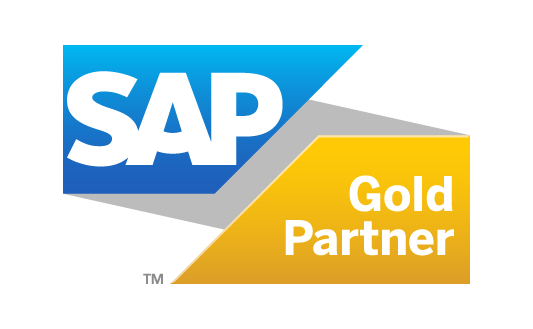S/4HANA Cloud is the ideal solution for enterprises that do not want to run their own SAP S/4HANA system. SAP provides the ERP system through the Software as a Service (SaaS) model, ready to run. Of utmost importance is an in-depth analysis of objectives and requirements to ensure that the SaaS model is suitable and to determine which form of SAP S/4HANA Cloud offers the company the best long-term benefits.
SAP S/4HANA Cloud at a glance
Operations, billing and standards – three key aspects that make S/4HANA Cloud stand out from traditional on-premises or even private cloud installations. SAP looks after the operation, maintenance and updating of the solution, as the SaaS provider. The costs of the solution are billed monthly, based on factors such as the number of users, the computing power that is reserved for the system and the volume of data or storage space required.
Its simplicity requires that customers apply the standard processes provided by SAP and adapt their own processes to these as much as possible.
 Therefore, before opting for SAP S/4HANA Cloud it is vital to investigate in detail the extent to which SAP’s process requirements can be implemented by the enterprise, and the impact this will have on productivity. What does a high level of standardisation offer in terms of potential for optimisation? How many USPs are involved in the individual business processes? Can these actually be modified? These questions must be answered before a decision can be made for or against a cloud solution.
Therefore, before opting for SAP S/4HANA Cloud it is vital to investigate in detail the extent to which SAP’s process requirements can be implemented by the enterprise, and the impact this will have on productivity. What does a high level of standardisation offer in terms of potential for optimisation? How many USPs are involved in the individual business processes? Can these actually be modified? These questions must be answered before a decision can be made for or against a cloud solution.
What are the benefits of SAP S/4HANA cloud?
SAP S/4HANA Cloud has a range of advantages compared with traditional on-premises operations:

Reduced TCO
SAP S/4HANA Cloud means that companies no longer need to reserve their own data centre capacity for running their ERP system. This is particularly attractive since a move to S/4HANA will often entail updating data-centre IT systems, with the associated high investment costs.

Scalability
The cloud solution lets companies adapt their ERP capacities to what they actually need at any time. As a result, user numbers and computing power can be quickly scaled up when demand peaks and then reduced again easily afterwards.

Standardisation
S/4HANA Cloud encourages standardisation of business processes. Since the SaaS solution prescribes the application of standards, it helps companies focus on what is important. In doing so it prevents the sort of uncontrolled system growth that is often responsible for high operating and maintenance costs.

Breaking down silos
Companies that have previously operated several SAP systems in parallel (e.g. for different national subsidiaries) can use S/4HANA Cloud to create a central basis ERP system. This improves data uniformity and consistency, results in better integration and fosters collaboration.

Strategic impetus for IT
The move to S/4HANA Cloud will free up resources and head space for the SAP experts in the enterprise. They can switch their focus to strategically important IT projects and create the basis for new, future-proof revenue models.
S/4HANA Cloud Essential Edition, Extended Edition or S/4HANA Private Cloud Edition?
SAP offers three versions of S/4HANA Cloud, which differ primarily in terms of the level of standardisation required. The version that is most suitable for a given business depends largely on its specific situation and objectives.

S/4HANA Cloud Essential Edition
The Essential Edition is all about uniformity and standardised business processes. There are only very limited options for adapting the system to the customer’s specific needs. All users work with the same version of the software, irrespective of their role. The major advantage of this configuration is that customers get a lean, easy to manage ERP system that is immune to uncontrolled growth and rocketing costs.
S/4HANA Cloud Extended Edition
The Extended Edition is a private cloud version of S/4HANA Cloud. Each customer keeps its own S/4HANA installation and adaptations are subject to few limits. It supports a role-based configuration and the SAP system can be integrated with the company’s own manufacturing processes as required. In addition, only one release update per year is actually mandatory.
S/4HANA Private Cloud Edition
The new Private Cloud Edition offers the full range of S/4HANA functionality with maximum flexibility and extensibility. It thus combines the advantages of the cloud with the strengths of an on-premises installation. As well as the software, the solution comes with line-of-business and industry processes for 25 sectors and industries.
How long does a S/4HANA Cloud migration take?
The migration of data and workloads to S/4HANA Cloud resembles a journey. The length of the process, be it a few weeks or several months, cannot be predicted without further investigation and depends on multiple factors. Alongside technical intricacies, which can differ starkly from one organisation to the next, a realistic roadmap can be drawn up on the basis of two core questions:
How complex are the processes within my organisation?
The greater the number of process touchpoints in different parts of your organisation, the more complex the journey will be. All of the service providers, suppliers and other partners that are presently connected to you via EDI must also be integrated into the new architecture, as must other SAP solutions such as SAP DMC in production. All of the processes must be relocated to the central S/4HANA Cloud to produce the transparent overall view that is required to improve efficiency.
How ready am I to adapt my processes to SAP standards?
While customisation and adaptation within the S/4HANA Cloud are generally possible, they entail a massive effort in terms of time and resources. The more closely the organisation’s processes can stick to the SAP “scope items” (best practices), the faster the conversion will be accomplished.
The length and complexity of the journey ultimately also depend on having the right mindset, and the right guide. If you understand the transformative potential of the cloud as a starting point for more efficient workflows and new business models, and rely on experienced SAP and cloud professionals for support, you will avoid any potential pitfalls and problems in plenty of time, leading you quickly to the goal line.
How does the S/4HANA Cloud migration proceed?
The parameters that affect the success of the migration of an existing ERP system to SAP S/4HANA depend on the starting point. Defining this initial situation is part of the key strategy phase, which must be completed before implementation.
Irrespective of the form these parameters take in detail, the S/4HANA Cloud migration to the Essential Edition will nearly always result in a greenfield implementation. This means that the system and processes will be set up from scratch. The opportunity to reuse existing elements (a brownfield approach) is rare in this case since very few production SAP systems comply with the standards required by S/4HANA Cloud.
Either implementation model is possible for migrations to the Extended Edition or S/4HANA Private Cloud. However, even here greenfield solutions give the customer the opportunity to use the S/4HANA implementation to subject their systems and processes to a thorough inspection. After all, even if companies have greater scope for flexibility here, the cloud move should prioritise the standardisation of processes.

FAQ: S/4HANA Cloud
What is S/4HANA Cloud?
S/4HANA Cloud is the version of the latest SAP S/4HANA ERP platform that runs in the cloud. This solution makes it easier for companies to move to the latest version of the SAP system. They do not need to update or upgrade their data-centre infrastructure and can even reduce their IT capacity and dispose of large areas of cost. In the Essential Edition, S/4HANA Cloud is highly standardised. This encourages the use of uniform ERP and process structures and reduces the cost of application management and business processes. The Extended Edition offers companies greater options for configuration but requires greater discipline at a process level as well as more in-depth SAP expertise within the business. As a SaaS offering, the solution also differs from the on-premises software in terms of price.
S/4HANA Cloud vs. On-Premises
Both operating models have their place and will co-exist in practice. The price and total operating cost are a key differentiator between S/4HANA Cloud and the traditional on-premises installation of the S/4HANA system. However, a simple cost analysis is not the sole decision-making factor for choosing a cloud option. The company’s current requirements and its future objectives are much more important. S/4HANA must be configured to support these objectives as much as possible. There is no silver bullet, just a correct decision made after thorough analysis and consultation.
What companies is S/4HANA Cloud most suited to?
The main prerequisite is the willingness and capability to integrate defined standards for software configuration and business processes. This also means employees having a mindset to embrace change and work with systems that are constantly evolving. Companies must also consider the extent to which their individual business processes are responsible for their competitive edge. The closer an enterprise is already aligned with a standard ERP configuration, the more suited it is to a cloud implementation. Start-ups that are able to set up their processes in line with the SAP standards from the beginning are also suitable candidates. Conversely, manufacturing companies that have built up a competitive advantage thanks to special production processes are usually better off with an on-premises installation or should at least consider the Extended Edition.
How frequently is S/4HANA Cloud updated?
Updates for S/4HANA Cloud are applied twice a year. The reason for this long cycle is the creation of a continuous delivery model (previously known as the Continuous Feature Delivery or CFD), which provides and installs new functions, updates and interfaces to other systems directly via the S/4HANA Cloud platform on a continuous basis that is not linked to fixed release cycles. That means that S/4HANA Cloud is always up to date.
How can I be sure that my S/4HANA system will continue to operate smoothly after an update?
Even in a standardised ERP environment like S/4HANA, it is necessary to check very carefully after each update that all business processes continue to run smoothly and without errors. Since manual verification is a lengthy (and therefore costly) process, SAP provides its customers with a practical solution. The SAP S/4HANA Cloud Test Automation Tool conducts more than 300 different waves of automated testing based on the SAP Best Practices processes. Customers can adapt these tests to their own individual requirements. In addition, an integrated macro recorder allows the automation scripts to be recorded and reused. This saves time and ensures that all business-critical ERP processes continue to operate smoothly after the update.